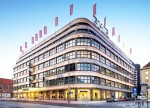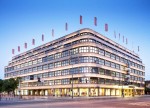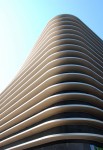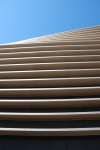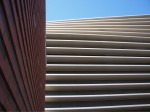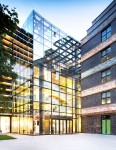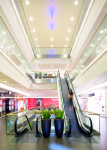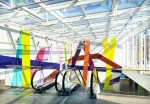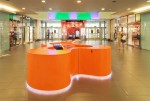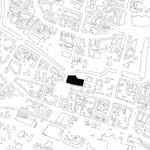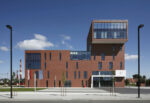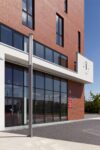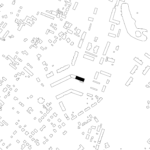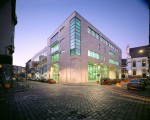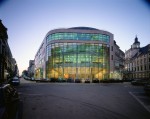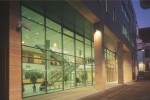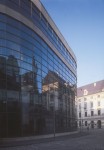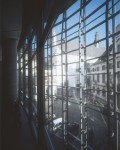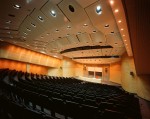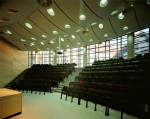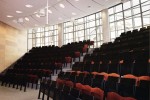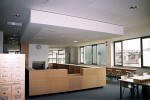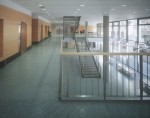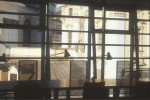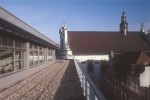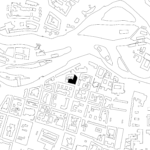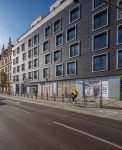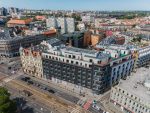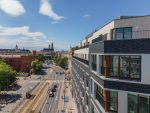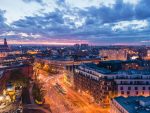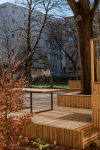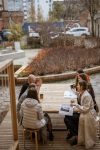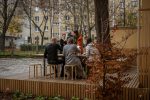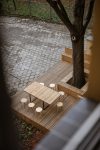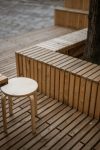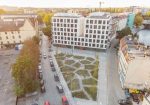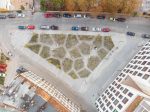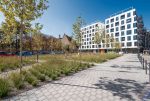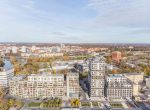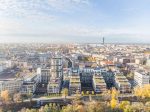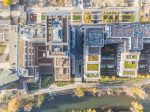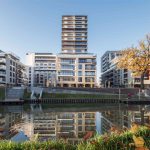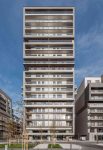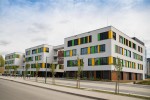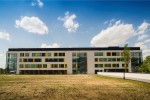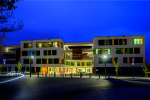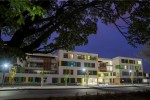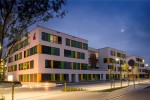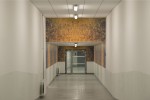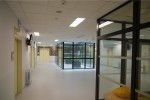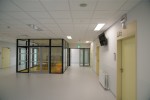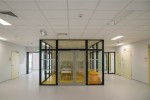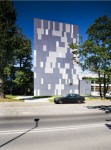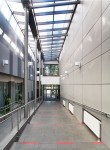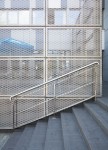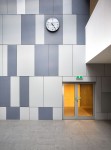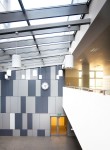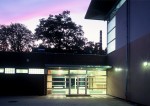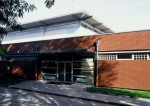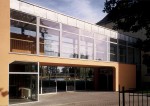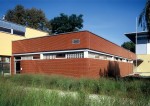We made this small project with intention to organize and revitalize the space of a typical courtyard between 19th century townhouses. We also wanted, perhaps manifesting a bit, to decontaminate a piece of the city. Summer in the city without greenery is gradually more and more difficult to endure. Hence the idea to create a comfortable space, giving shelter from the sun, being both an extension of our office and a meeting place for residents of the tenement. The form of the terrace was designed for easy accessibility for all users – a low platform, equipped with fixed furniture, arranges the space using simple forms.
This is one of our smallest projects ever done. To realize it we removed from soil 30m2 of concrete. First of all we arrangeded an arboristic care for magnificent glandular aylanthus (aka ‘Mietek’), which was placed in the central part of our terrace. Among others, sanitary and care cuts of the crown as well as loosening and aeration of the soil structure were carried out. The existing tree provides natural protection from the sun on hot summer days.
The terrace is made of narrow 5.5 cm x 2.65 cm boards, spaced at 1 cm intervals, which creates an openwork structure that does not block the natural absorption of rainwater by the soil. To make a terrace, we used certified softwood, which came from forests where sustainable forest management is carried out. We consciously decided not to use chemical wood preservatives – thanks to that we did not introduce about 10 liters of oils, which are based on solvent, into the environment. The wood species we have chosen (Siberian larch) has natural resistance to weather conditions and even without any chemical maintenance it will serve us for at least 10-15 years. Over time, its natural color will be covered with a gray patina.
After freeing another 40m2, we designed a garden. Filling this small area with numerous shrubs and perennials will ensure lush, dense, understory greenery in the future. We also planted two beech trees, which will create a natural protection from the sun for the southern, strongly sunny elevation of the building. The entire 70m2 has become a biologically active area and helps us to better manage rainwater within the courtyard.
We invited all residents of the tenement house to the first phase of the project (cleaning the courtyard). We did something like a neighbourhood co-op, bought tools, plants and ordered transport. The terrace itself was made by a professional company. After all of this we had a barbecue, which lasted until the early morning hours.


